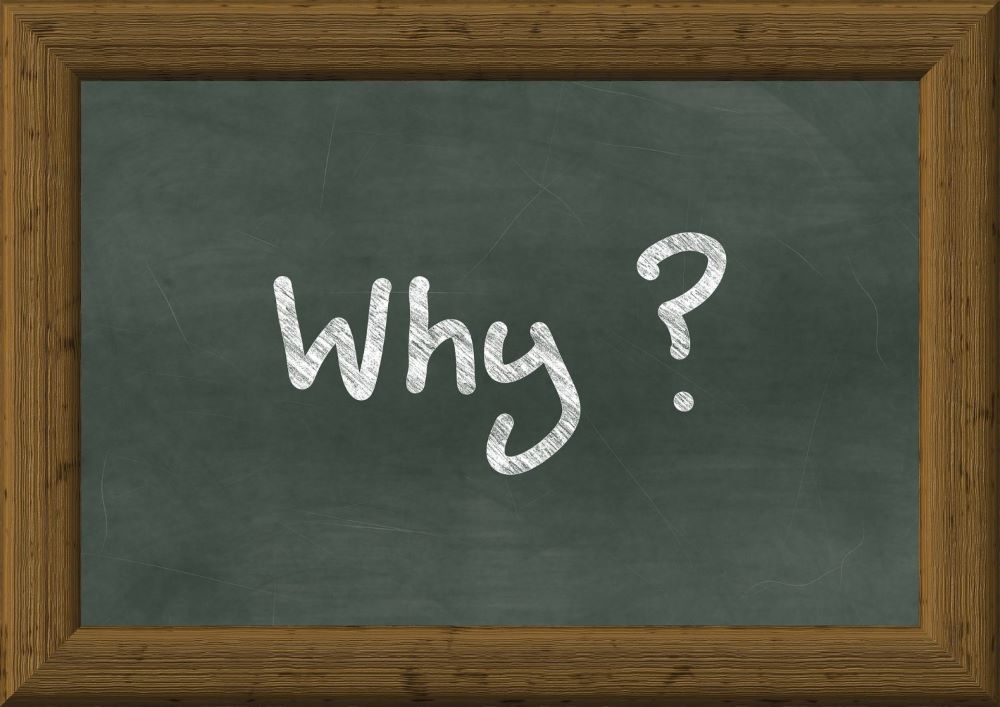The Why Question in Communication for Excellent Results.
The Why question – a question that can change your life: for the worse and the better! Do you know how heavy this question weighs? Let me tell you: “Why” is one of the first questions we ask to understand the world and, at the same time, one of the most aggressive if used incorrectly.
For a long time, I didn’t understand why I didn’t have many friends around me and why I was always alone. I was curious about the people around me, but people perceived my curiosity differently. With every “why” question I asked, I was destroying the relationship little by little, and the level of connection I had with that person was decreasing.
First, when you’re asked, “Why did you … ?” something or other, you’re automatically put in the child’s position, and the other person is put in a superior position. You must start explaining what and how why you did something or other.
Do you want to feel like returning to school and being questioned by teachers? As an adult, do you really like being treated as a child? I don’t think so. On a subconscious level, this question activates a role reversal and produces communication resistance. Does the person in front of you, the one who is asking you “Why … ?” see you as a child?
In my case, after I understood this priciple and noticed how I was using the why question, I started to make some changes. I moved the focus off the cause and put it on the process. How did I do that? Well, exactly as you read it. I started using the “How … ?” question more often. This way, people no longer felt inferior, and we started working together to improve the processes.
After reading so far, let me tell you a different thing. The why question is not always bad. In my coaching sessions, I identify blockages and limit beliefs to offer new options by successfully using a powerful technique: “The 5 Whys method.” So, the why question in communication is not always negative. The goal is to identify the problems encountered by the client or hidden unproductive benefits layer by layer. In the end, we can even begin to see possible solutions.
Here is a short example described some time ago by a man who thought he was “unlucky in love.” At first glance, the client came up with a problem, and after applying the 5 whys, he realized that the origin was somewhere else.
1.
Q: Why did you come here?
A: Because nobody loves me, and I want to fix that.
2.
Q: Why do you think that?
A: Because I don’t have a romantic relationship.
3.
Q: Why do you want a romantic relationship?
A: Because I’m old enough and want a family.
4.
Q: Why do you think having a family would change your life?
A: Because when I will be old, there will have someone to take care of me.
5.
Q: Why do you think a family should take care of you? Couldn’t you take care of yourself? What would you need?
A: I would like financial security and some money that will allow me to continue my lifestyle after I retire.
The man understood this, and started to make a strategy for financial prosperity, a savings plan, and at the same time, a course that would make him able to apply for a better-paying job.
That’s why coaching is beautiful: only by changing perspective and using some questions, you can you discover and understand the real needs.
I describe here the method you can apply to your current challenge. Don’t take my word for it; try it. Grab a pen and paper, and find out your other options.
Here’s a brief application of the 5 Whys.
1.
Q: Why are you in this state now?
A: Because I have problem “X”.
2.
Q: Why is it important for you to solve “X”?
A: Because that’s how I will get “Y”.
3.
Q: Why do you want to get “Y”?
A: Because that’s how I’ll get “Z”?
4.
Q: Why do you think getting “Z” will change your life?
A: Because “W”.
5.
Q: Why do you think only “W” can fix it? Aren’t there other ways? Do you know anyone who has had this challenge and solved it another way? How did they do it?
A: …
The “Why … ?” question can go on and on, except after 5 whys, the answers start repeating themselves, and you’ve already identified the source of your problem. You can start building a strategy from here that will get you to the state you want as soon as possible.
For that, do this very quickly by answering some of these questions:
– What is the price for this objective?
– Do I have the resources? Time, money, energy?
– If I don’t have the resources but feel I can get them, do I have the skills to get them?
– Do I have the opportunity to learn those skills?
– Has anyone else succeeded in doing so? How did they do it?
What do you think? Is it going to work? Take and write down as precisely as possible the steps and measures you want to take to get to the state you wish to because 99% of the time, it is possible.
The Why Question in Communication for Excellent Results
I hope this clarification of the why question in communication is helpful, and from now on, you will use it productively. If you have tested the method, leave your answer here about how it worked for you, as you may inspire other friends with your solution.
If you still want a specialist opinion to get a new perspective in Coaching, please write to me privately. Additionally, if you want to read about my other project where you become one with the mountains, you can do it here!
See you soon.
Did this article provide a solution or a new perspective? Please consider making a donation! Your support ensures that you will find valuable content whenever you return.
Thank you for your generosity!




